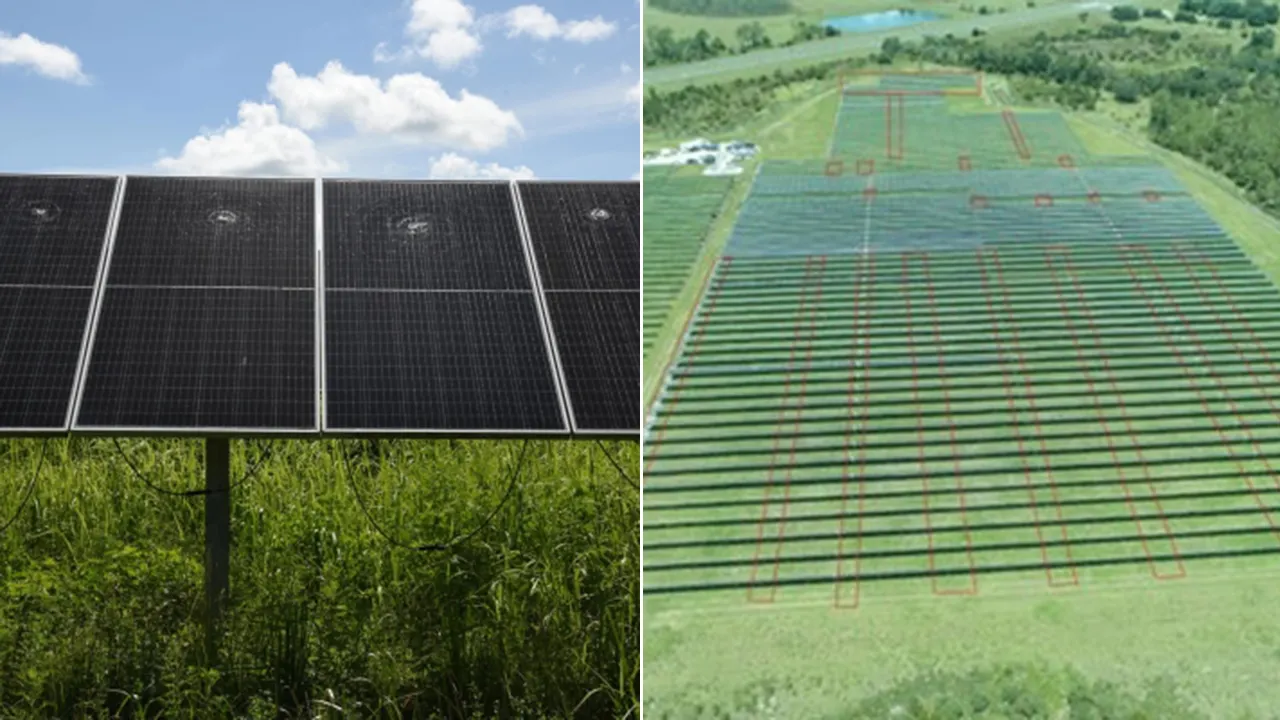A few years ago, the idea of deliberately blocking the sun to combat climate change was so taboo for scientists. But a lot can change in a short time.
As the disastrous effects of climate change mount, Congress has asked federal scientists for a research plan, private money is flowing and rogue start-ups are attempting experiments — all signs that momentum around solar geoengineering is building fast. The most discussed approach involves spraying tiny particles into the stratosphere to reflect sunlight and cool the planet. Other proposals include injecting sea salt into clouds to increase their reflectivity or using giant space parasols to block the sun.
It might all sound like dystopian science fiction, but some techno-futurists, like OpenAI’s chief executive, Sam Altman, are already normalizing it: “We’re going to have to do something dramatic with climate like geoengineering as a Band-Aid, as a stop gap,” he said in January at the World Economic Forum in Davos.
No one fully understands the risks of these technologies — which could include calamitous disruptions in weather — or how significant the benefits could be. I’m increasingly convinced that we should do more research on solar geoengineering. But such high-stakes science requires extraordinary levels of transparency and accountability to the global public. The alternative is clandestine research controlled by corporations or autocratic regimes, lurching toward deployment without knowing — or knowing and not sharing — the true risks.
The potential risks of solar geoengineering are serious. Spraying reflective particles in one place, for example, could significantly change rainfall patterns elsewhere. What’s more, once anyone starts solar geoengineering at a larger scale, suddenly stopping it could lead to “termination shock” — global temperatures rapidly readjusting to where they would have been without geoengineering. With such terrifying points of no return, every accelerating step of research requires global public participation and deliberation.
Most research so far has been tentative and contained to computer simulations. But to know what will happen in the real world, we also need outdoor experiments. By launching an instrument-laden balloon into the stratosphere, for example, researchers could release a tiny amount of particles and measure how they interact with the atmosphere, with minimal environmental risk.
But already we’ve seen a backlash to these kinds of experiments: Harvard geoengineering researchers planned a dry run of their instruments in Sweden in 2021 only to be shut down after the Indigenous Saami Council and local environmental groups protested the tests. A key concern was how such research could redirect attention and investment from more pressing efforts to reduce emissions, thereby becoming a moral hazard. More recently, Mexico banned geoengineering experiments after discovering an American tech entrepreneur had launched a balloon test without permission. And a startup out of Israel has now raised millions of dollars and is planning experiments with little to no transparency. Some assessments suggest that more experiments, and even larger deployments, are increasingly likely. It would be far better if they happened in the open, as in Sweden, rather than in secret.
Even in places where no experiments have been planned, the public is wary. Most people haven’t heard of geoengineering in the United States, but of those who have, 72 percent reported being very concerned we’ll use it before understanding its impact. More broadly, while there’s evidence of support for research, that support is reluctant and conditional. Without transparency and trust, public debate on geoengineering could devolve into conspiracy theories and partisan ideology.
A reluctance to trust scientists is understandable. Science as a profession has for too long pursued prestige at the expense of integrity, and public scientific institutions have been increasingly privatized with minimal accountability. With a long, troubled history that includes eugenics and weapons of war, we cannot pretend that science is either pure or infallible.
But science is fallible precisely because it is a practice, a cooperative human activity. And as the moral philosopher Alasdair MacIntyre reminds us, engaging in a practice well requires exercising its virtues — which for science include transparency, honesty, humility, skepticism and collaboration. For geoengineering, that means disclosing all funding and effectively managing potential conflicts of interests; ensuring the participation of stakeholders from around the world in decision making; avoiding group think; sharing early-stage results and data to accelerate research; and engaging in radically open science.
Transparency on its own may not lead to the widespread adoption of a new technology. A study on Covid-19 vaccine communication showed that increased transparency, especially about negative outcomes, led to lower vaccine acceptance — but it did increase trust in public health. A potential lesson for solar geoengineering is that transparency is important even when, or perhaps especially when, it doesn’t result in the outcome scientists initially imagine.
We should be especially wary of ceding control over geoengineering research to the tech industry. Often under the guise of virtue, techno-futurists capitalize on the power that comes from scientific knowledge while exploiting people and the environment, a pattern The Atlantic’s Adrienne LaFrance diagnoses as techno-authoritarianism. We cannot allow private for-profit entities to steer, or covertly fund, solar geoengineering research.
Instead, any research must be done by institutions acting in the public’s interest. If private funding is the only option, scientists will need to choose carefully where they work and defend their integrity against external pressures. They must clearly communicate research findings, positive and negative, and educate the public about what’s possible and what’s at stake. That way the public can in turn hold policymakers, regulators and scientists to account, with everyone working together in pursuit of a common good.
When confronted with the prospect of solar geoengineering, we may wish it had never come to this point. But we can still decide how to move forward responsibly, with and for the public.
Jeremy Freeman is the executive director of CarbonPlan, a climate research nonprofit. Much of CarbonPlan’s work has focused on carbon dioxide removal, another controversial climate technology.
The Times is committed to publishing a diversity of letters to the editor. We’d like to hear what you think about this or any of our articles. Here are some tips. And here’s our email: letters@nytimes.com.
Follow the New York Times Opinion section on Facebook, Instagram, TikTok, WhatsApp, X and Threads.






